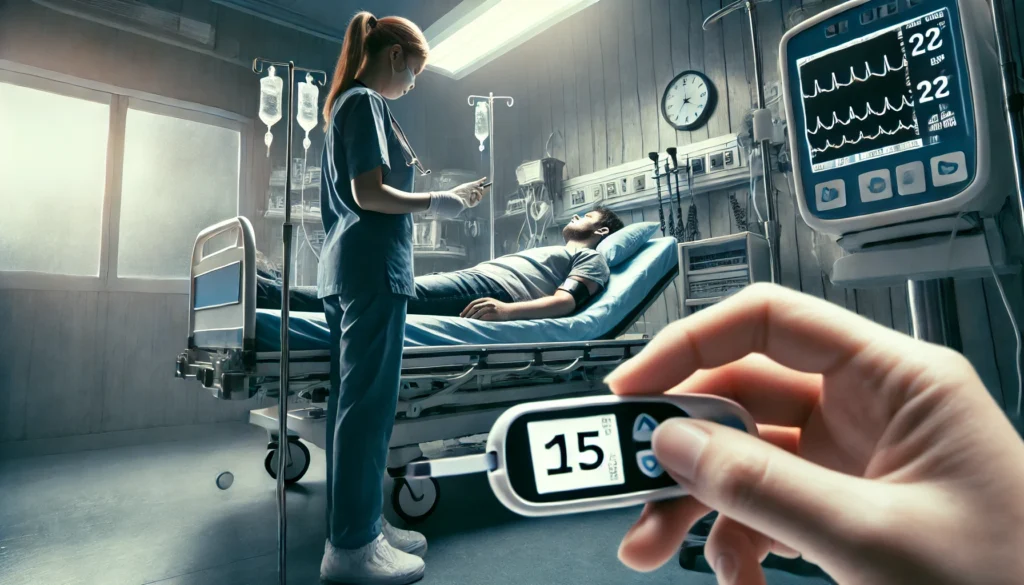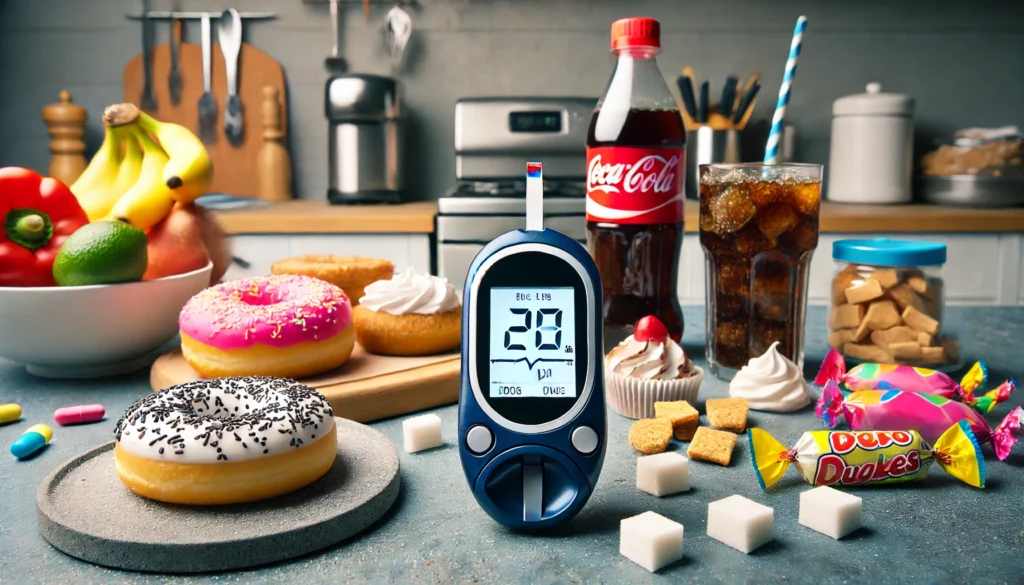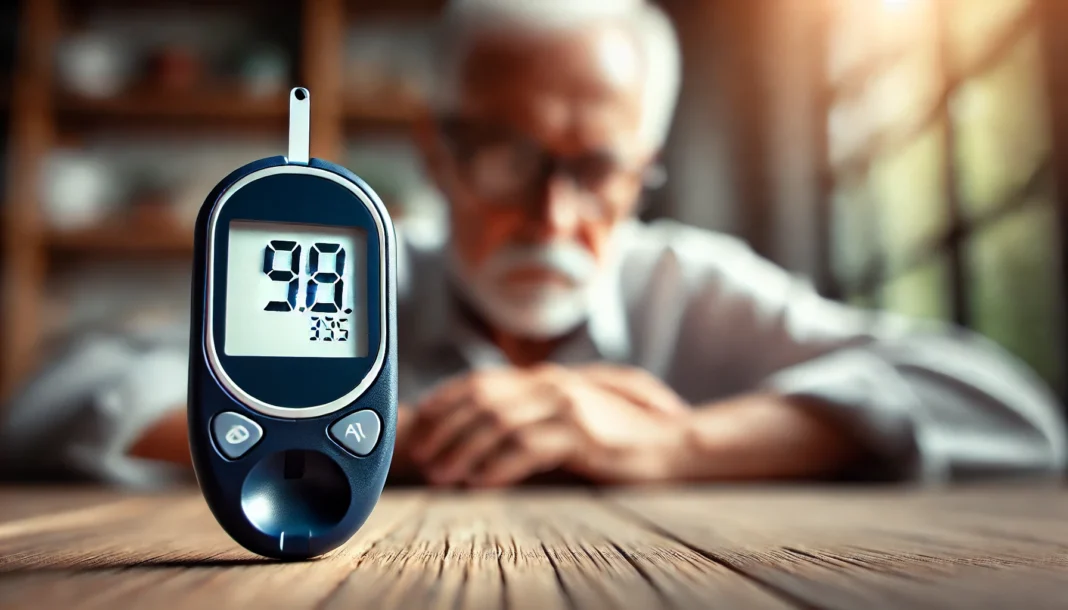Glucose is the body’s primary source of energy, derived from the foods we consume, particularly carbohydrates. However, when glucose levels rise too high, it can become a serious health concern. Understanding what constitutes a high glucose level, what factors contribute to sugar spikes, and when to seek medical attention is crucial for maintaining overall well-being.
You may also like: How Diabetes Affects the Brain: Understanding Brain Fog, Memory Loss, and Mental Confusion from High Blood Sugar
The body relies on insulin, a hormone produced by the pancreas, to regulate blood glucose levels. When insulin production is insufficient or the body becomes resistant to its effects, glucose accumulates in the bloodstream. This condition, known as hyperglycemia, can lead to short-term discomfort and long-term health complications if not managed properly. To determine whether one’s blood sugar levels are dangerously high, it is essential to recognize the thresholds for concern and the symptoms associated with elevated glucose levels.

Normal vs. High Blood Glucose Levels
Blood glucose levels are measured in milligrams per deciliter (mg/dL) and can fluctuate throughout the day based on food intake, activity levels, stress, and metabolic function. A fasting blood glucose level between 70 and 99 mg/dL is considered normal. After meals, it is common for blood sugar to rise, but levels should generally not exceed 140 mg/dL two hours postprandial (after eating). When levels rise above these thresholds consistently, it may indicate prediabetes or diabetes.
A fasting glucose level between 100 and 125 mg/dL is classified as prediabetes, a warning sign that the body is struggling to regulate blood sugar efficiently. Once fasting blood glucose reaches 126 mg/dL or higher on multiple occasions, diabetes is typically diagnosed. Post-meal glucose readings that surpass 200 mg/dL are also indicative of diabetes. If someone experiences blood sugar readings above 300 mg/dL, they are at risk of serious complications and should seek immediate medical attention.
Causes of Elevated Blood Glucose Levels
There are multiple factors that contribute to high glucose levels, ranging from dietary choices to underlying medical conditions. Excessive carbohydrate consumption, particularly refined sugars and processed foods, can cause sharp spikes in blood sugar. Additionally, skipping meals and then consuming large amounts of food can lead to unpredictable fluctuations in glucose levels.
Physical activity plays a crucial role in blood sugar regulation. A sedentary lifestyle reduces the body’s ability to utilize glucose efficiently, contributing to insulin resistance. Conversely, regular exercise enhances insulin sensitivity, helping glucose move into cells for energy production rather than accumulating in the bloodstream. Stress also has a significant impact on glucose levels, as the release of stress hormones like cortisol and adrenaline can prompt the liver to release stored glucose, elevating blood sugar.
Certain medical conditions can also lead to high glucose levels. Hormonal disorders such as Cushing’s syndrome and hyperthyroidism can interfere with insulin function. Additionally, medications such as corticosteroids and some diuretics may contribute to elevated blood sugar. Infections, illness, and dehydration can further exacerbate glucose imbalances, making careful monitoring essential for those at risk.
Dangerous Glucose Levels: When to Seek Immediate Help
While moderate elevations in blood sugar can often be managed through dietary and lifestyle adjustments, dangerously high levels require urgent medical attention. A blood sugar level of 300 mg/dL or higher can lead to diabetic ketoacidosis (DKA), a life-threatening condition characterized by excessive ketone production, which can cause dehydration, confusion, and coma. Symptoms of DKA include excessive thirst, frequent urination, nausea, vomiting, abdominal pain, and fruity-smelling breath.
Another severe complication of extremely high blood sugar is hyperosmolar hyperglycemic state (HHS), which typically occurs in individuals with type 2 diabetes. This condition develops when blood sugar levels surpass 600 mg/dL, leading to extreme dehydration and altered mental status. Unlike DKA, HHS does not typically involve ketone buildup, but it is equally life-threatening and requires immediate medical intervention.
Understanding the thresholds of concern is essential. A blood sugar reading of 400 mg/dL or higher warrants emergency medical care, as it significantly increases the risk of both DKA and HHS. If glucose levels exceed 500 mg/dL, hospitalization may be necessary to prevent life-threatening complications. Cases where blood sugar has reached 700 mg/dL or beyond are critical and require intensive treatment. Although rare, there have been documented cases of blood sugar levels exceeding 1,000 mg/dL, which nearly always result in coma or death if not treated immediately.
Managing and Preventing High Blood Glucose Levels
Prevention and management of high glucose levels require a multi-faceted approach involving diet, physical activity, medication, and regular monitoring. Consuming a balanced diet rich in fiber, healthy fats, and lean proteins helps stabilize blood sugar. Avoiding processed foods and sugary beverages is crucial for maintaining healthy glucose levels.
Regular exercise plays a pivotal role in blood sugar management. Engaging in at least 150 minutes of moderate-intensity exercise per week improves insulin sensitivity and glucose utilization. Simple activities such as walking after meals can significantly reduce postprandial glucose spikes.
For individuals with diabetes or prediabetes, routine blood sugar monitoring is essential. Regular checks help detect patterns and identify triggers that cause glucose spikes. Many people find continuous glucose monitors (CGMs) beneficial for real-time insights into their blood sugar fluctuations.
In cases where lifestyle modifications are insufficient, medications such as metformin, insulin therapy, and newer drug classes like GLP-1 receptor agonists may be prescribed to help regulate blood sugar. Working closely with a healthcare provider ensures the most effective and individualized treatment plan.

Frequently Asked Questions About Dangerous Blood Sugar Levels
1. Can high glucose levels cause confusion and memory issues?
Yes, high glucose levels can cause confusion, particularly when blood sugar surges to extreme levels. Many individuals don’t realize that sustained poc glucose levels high can lead to brain fog, poor concentration, and even short-term memory lapses. When your brain is deprived of balanced glucose delivery, neurotransmitter function becomes impaired, disrupting cognition. This is especially relevant when blood sugar over 400 or even a glucose level over 300 persists without proper management. In severe cases, blood sugar level 700 or more can induce a diabetic hyperosmolar state, a medical emergency that may cause disorientation or coma.
2. What should I do if my blood work glucose is high repeatedly?
If your blood work glucose is high on multiple tests, you should not dismiss it—even if you feel fine. Repeated abnormal readings suggest chronic hyperglycemia, which can damage nerves, kidneys, and blood vessels over time. A pattern of poc glucose levels high might indicate prediabetes, uncontrolled diabetes, or poor response to current treatments. It’s especially important to take action if you’re noticing values that align with what is considered a high glucose level, as persistent elevations may require changes in medication or lifestyle. Consulting with a specialist can help you uncover hidden causes and tailor a sustainable intervention plan.
3. Is a blood sugar reading 700 survivable?
A blood sugar reading 700 is survivable with immediate medical intervention, but it’s extremely dangerous. This level can result in dehydration, electrolyte imbalance, and coma due to diabetic hyperosmolar syndrome. What level of blood sugar is dangerous? Anything over 400 raises concerns, but blood sugar level 700 is a critical glucose level that may indicate that insulin is not functioning at all. Prompt hospitalization is required to prevent organ failure. While has there ever been a blood sugar over 1000? Yes—but such cases are rare and life-threatening, often involving delayed diagnosis or treatment in individuals with undiagnosed diabetes.
4. Should I be worried if my CMP glucose is high on a routine test?
Yes, you should be concerned if your CMP glucose is high, even if other values appear normal. A Comprehensive Metabolic Panel (CMP) measures fasting glucose, and elevated levels often go unnoticed because symptoms might not be obvious yet. This type of result may be an early sign of metabolic dysfunction. Many ask, “should I be worried if my CMP glucose is high?”—the answer is yes, especially if the reading exceeds what is considered high glucose in blood. It’s essential to explore whether you’re experiencing blood sugar over 300 regularly, which would require immediate lifestyle or therapeutic changes.
5. How dangerous is a sugar level above 400 for long-term health?
A sugar level above 400 poses immediate and long-term threats to health. Consistently high levels accelerate the progression of diabetic complications such as retinopathy, nephropathy, and neuropathy. Moreover, blood sugar over 400 impairs wound healing and immune responses, increasing the risk of infections. When assessing what is a dangerous glucose level, anything in the range of blood glucose over 300 to blood sugar 600 should raise red flags. Over time, high readings like sugar level 500 can also contribute to cardiovascular disease, especially if combined with other metabolic risk factors.
6. Why is my fasting glucose high even though I eat healthy?
There are several possible reasons why your fasting glucose is high despite a healthy diet. Stress, poor sleep, certain medications, or an early phase of insulin resistance can all raise morning glucose. People are often surprised when poc glucose levels high are detected, even with balanced meals. This may be due to the dawn phenomenon, where hormones like cortisol and growth hormone elevate blood sugar in the early morning hours. It’s essential to understand what do blood glucose levels to rise mean beyond food intake—they reflect hormonal shifts, organ function, and even genetic predisposition. If blood sugar in 500s appears on fasting labs, further testing is critical.
7. Is 240 a normal sugar level after eating?
A blood sugar of 240 after eating is not considered normal and should prompt further investigation. While slight elevations post-meal can occur, especially in individuals with insulin resistance, is 240 normal sugar level? No—it exceeds what is considered a high glucose level. If your blood sugar spikes that high after meals regularly, you may be experiencing postprandial hyperglycemia. This can also explain cases where blood sugar over 500 or glucose level over 300 emerges in the evening or after large meals. Continuous glucose monitoring can reveal how often your blood sugar stays in dangerous zones.
8. What number is a high blood sugar during illness or infection?
Illness and infection often raise blood sugar unpredictably, even in well-managed individuals. What number is a high blood sugar in this context? Anything above 300 mg/dL consistently indicates the body is under stress and glucose is poorly regulated. Blood sugar above 400 during illness should prompt a call to your doctor or an ER visit. These spikes are not uncommon in diabetics who develop secondary infections or dehydration. In severe cases, sugar level 500 or more may occur, and this level of hyperglycemia increases the risk of developing diabetic ketoacidosis or hyperosmolar hyperglycemic syndrome.
9. Has there ever been a blood sugar over 1000 in a clinical case?
Yes, documented cases exist where patients had blood sugar over 1000, though such readings are extremely rare and critical. These are typically associated with new-onset Type 1 diabetes or severe neglect in Type 2 diabetes, and they nearly always require ICU care. When asking, is a blood sugar level of 459 considered dangerous? Absolutely—and levels like blood sugar 600 or blood sugar reading 700 reflect escalating risk. A blood sugar in 500s may already impact neurological function and hydration, but blood glucose over 300 is where aggressive intervention becomes medically necessary. Clinical literature shows that survival beyond sugar level 500 often hinges on early and intensive treatment.
10. Is 200 sugar readings bad if they only happen occasionally?
An occasional sugar reading of 200 isn’t ideal but may not be immediately dangerous if your overall glucose control is stable. However, is 200 sugar readings bad? Yes, especially if it’s part of a pattern. Even intermittent spikes may damage blood vessels and accelerate complications. It’s important to explore why you’re experiencing poc glucose levels high after specific meals or stressors. Keeping a log to identify triggers can prevent future episodes of blood sugar over 400. Over time, unchecked spikes can become routine, leading to chronically dangerous sugar levels even if they began as infrequent occurrences.

Conclusion: Recognizing and Addressing High Glucose Levels
Understanding what is considered a high glucose level and recognizing the signs of dangerous sugar spikes is vital for both those at risk and individuals already diagnosed with diabetes. While mild elevations can often be managed through lifestyle adjustments, significantly high blood sugar levels require immediate attention to prevent severe complications.
By maintaining a healthy diet, staying physically active, monitoring glucose levels, and adhering to prescribed treatments, individuals can reduce the risk of hyperglycemia-related health issues. Awareness and proactive management are key to ensuring long-term health and preventing critical glucose-related emergencies. Those who experience persistent high blood sugar levels should consult their healthcare provider to develop a comprehensive plan for glucose control and overall well-being.
high blood sugar risks, diabetes glucose levels, symptoms of high glucose, glucose monitoring devices, managing blood sugar spikes, diabetic ketoacidosis prevention, hyperglycemia complications, exercise for glucose control, insulin resistance management, nutrition for blood sugar control, stress and blood sugar, medical treatment for diabetes, continuous glucose monitoring, diabetes emergency care, fasting blood glucose levels, lifestyle changes for diabetes, blood sugar crisis, how to prevent hyperglycemia, diabetic coma symptoms, emergency response to high glucose
Further Reading:
Dangerous Blood Sugar Levels : Understanding Symptoms & Management
Hyperglycemia (High Blood Sugar)
Disclaimer: The content published on Better Nutrition News (https://betternutritionnews.com) is for informational and educational purposes only. It is not intended as a substitute for professional medical advice, diagnosis, or treatment. Always seek the guidance of a qualified healthcare professional before making any changes to your diet, nutrition, or wellness practices. The opinions expressed by authors and contributors are their own and do not necessarily reflect those of Better Nutrition News.
Better Nutrition News and its affiliates make no representations or warranties regarding the accuracy, completeness, or reliability of the information provided. We disclaim all liability for any loss, injury, or damage resulting from the use or reliance on the content published on this site. External links are provided for reference purposes only and do not imply endorsement.



